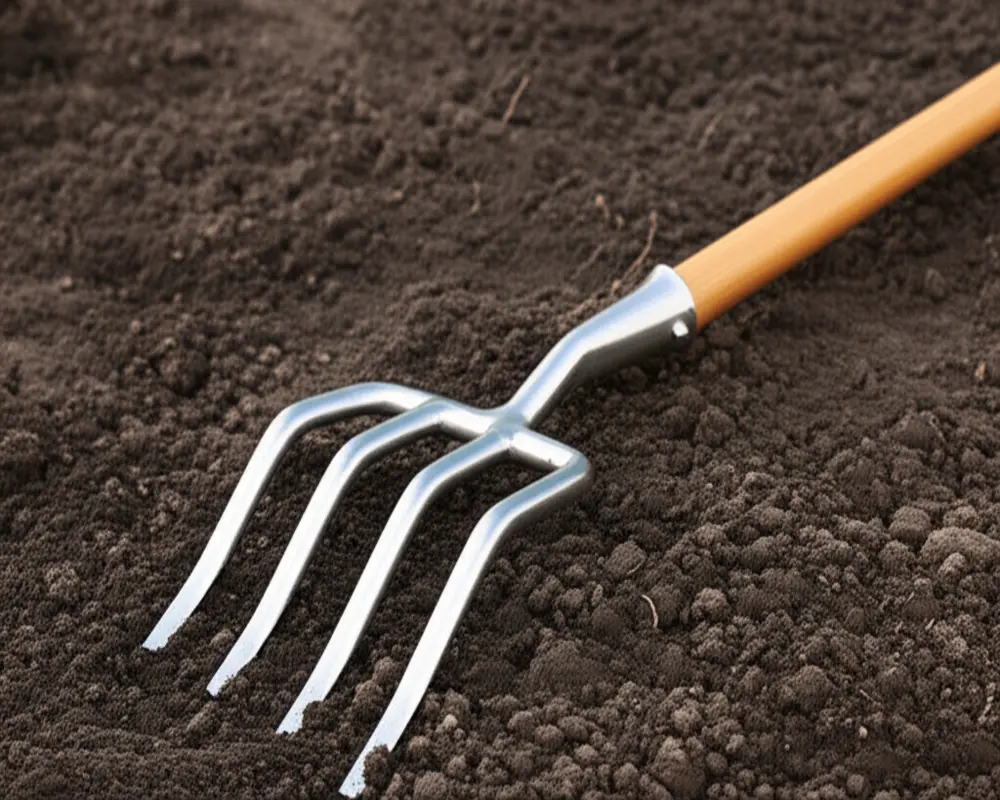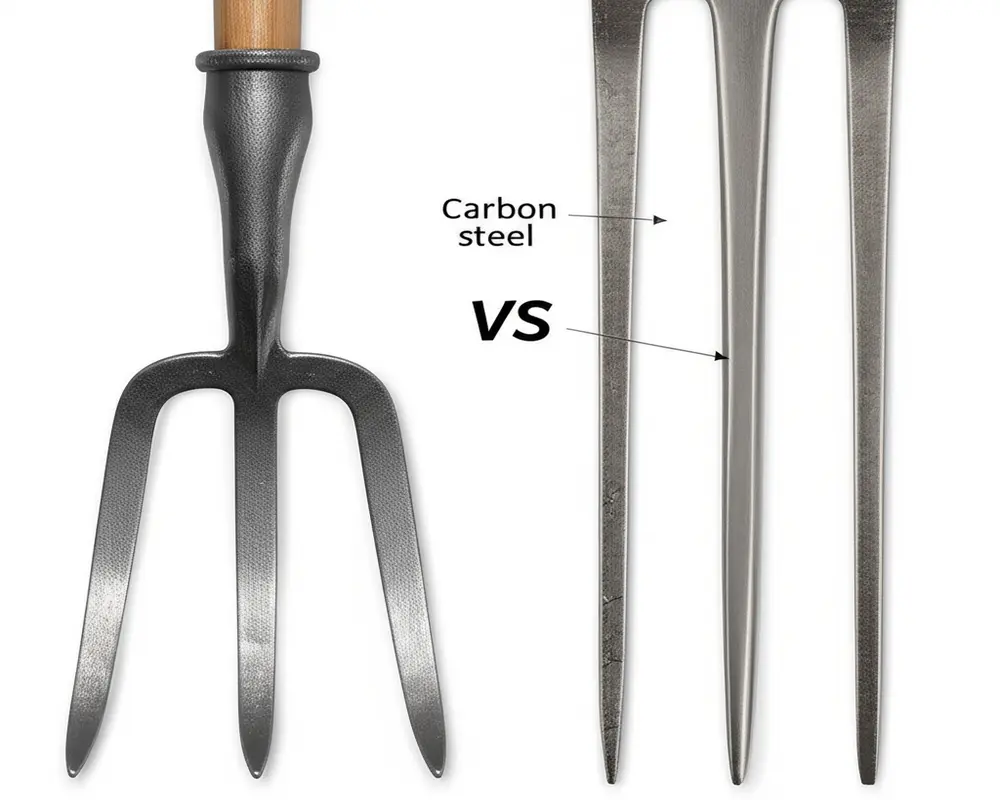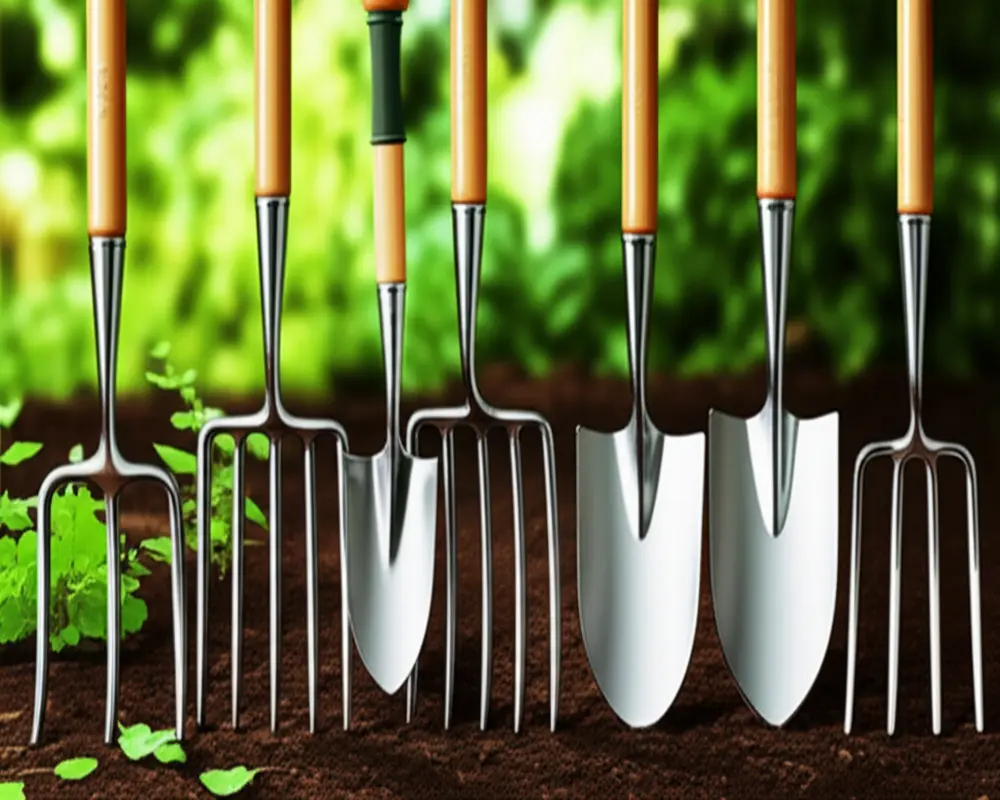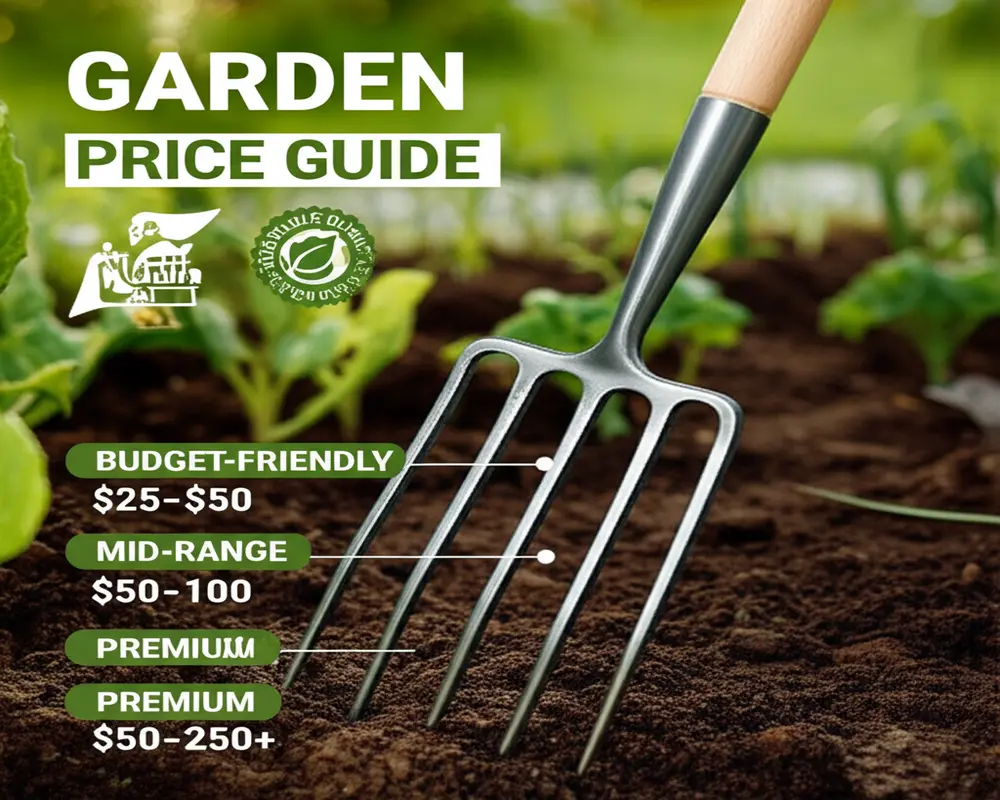Garden Fork Price Guide 2025: What to Expect & How to Choose
The humble garden fork stands as a vital instrument within any gardener’s toolkit. It effortlessly aids in soil turning, aeration, and the removal of stubborn weeds. As we approach 2025, understanding garden fork prices and choosing wisely can define the efficiency and enjoyment of your gardening efforts. This comprehensive garden fork price guide unpacks the cost spectrum, materials, brands, and savvy buying advice that equip you to find the tool delivering the best value for your unique gardening needs.
Thank you for reading this post, don't forget to subscribe!This guide explores price tiers spanning budget-friendly to premium, the influence of materials on durability and cost, brand reputations, and pointers for aligning your purchase with your gardening habits. Our aim is to empower readers with knowledge to make informed decisions that balance performance and investment wisely.
Garden Fork Price Guide: An Overview by Budget Tier
The cost of garden forks in 2025 generally fits within three budget categories, each tailored to different gardening frequencies and soil challenge levels.
Entry-Level / Budget-Friendly Forks ($25 – $50)
Designed for occasional gardeners or those cultivating soft soil, entry-level garden forks typically feature basic carbon steel tines, often welded rather than forged, and handles made from plastic or lower-grade wood. Their performance suits light use, though their longevity under persistent rugged tasks may be limited.

Mid-Range / General Purpose Forks ($50 – $100)
For regular gardeners, mid-range forks provide a correctly balanced investment between price and robustness. These models often use higher-grade carbon steel or entry-level stainless steel tines paired with ash or fiberglass handles. This construction enhances reliability and comfort for continuous gardening activities.
Premium / Professional-Grade Forks ($100 – $250+)
When durability, ergonomics, and performance under frequent heavy-duty use become paramount, premium garden forks step forward with forged carbon or high-grade stainless steel. These forks boast solid socket connections and premium handles designed for prolonged use, occasionally backed by lifetime warranties.
Key Factors Influencing Garden Fork Price
Several technical and brand-related factors influence pricing, and understanding these clarifies why certain garden forks command higher costs.
Tine Material
Carbon steel tines offer strong penetration and durability at a comparatively affordable cost. However, they require more maintenance to prevent rust. In contrast, stainless steel resists corrosion effortlessly, suitable for wetter conditions, though often at a premium price point.
The production process between forged and welded tines also affects price. Forged tines, shaped under intense heat and pressure, provide superior strength and are more costly, while welded tines consist of separate pieces fused together, often reflecting a budget-level choice.

Handle Material & Construction
Handles crafted from ash wood deliver a natural feel and shock absorption, varying in quality grades that influence price. Fiberglass alternatives provide higher weather resistance and longevity but often come at a higher cost. Some garden forks feature steel handles which maximize strength but may add to the tool’s weight and affect ease of use.
How the handle connects to the fork head is critical: solid sockets provide more durable connections than the tang & ferrule or welded designs generally seen in lower-cost options.
Brand Reputation & Origin
This aspect significantly impacts garden fork pricing. Brands with established legacies, such as Sneeboer, DeWit, Bulldog, Fiskars, and Spear & Jackson, often justify their pricing through craftsmanship, robust warranties, and reliable customer service.

Design & Ergonomics
Enhanced features such as treaded steps for foot placement, ergonomic grips, and specialized fork head shapes can increase cost but also boost gardening comfort and efficiency, making these elements worth considering depending on intended usage.
Understanding Value: When to Splurge vs Save
Assess your needs realistically to gauge which tier provides the best cost-to-performance balance.
If your gardening requires frequent, intensive soil work, investing in a premium fork is cost-effective over time due to reduced maintenance and replacement costs. Conversely, for light, infrequent gardening tasks, budget-friendly models may suffice.
A useful measure is cost per use, which can highlight that a higher upfront price may translate to economical longevity.
Watch for warning signs such as flimsy handle-to-head connections, subpar welds, or low-quality materials which often herald early failure.
Indicators of good value include robust handle connections, reputable materials, and positive user reviews reflecting sustained performance under real-world conditions.
Brand-Specific Price Tiers & Recommendations
In 2025, the market offers a spread across brands tailored to budgets and expectations:
- Budget-Friendly Brands: Fiskars and local brands offer functional models for casual use.
- Mid-Range Brands: Spear & Jackson, Corona, and Radius Garden combine quality and value suited for regular gardeners.
- Premium Brands: Sneeboer, DeWit, Bulldog, and Kent & Stowe define excellence with superior materials, craftsmanship, and often lifetime warranty support.
Smart Buying Strategies
Choosing where and when to buy impacts your final price and satisfaction:
Online options provide wide selection and competitive pricing, though physically handling a product at local stores or specialty shops allows for comfort and build quality assessment.
Seasonal sales or clearance events, often in late winter or early spring, can yield substantial savings on quality garden forks.
Strong warranties and flexible return policies reduce purchase risk and often indicate brand confidence.
Maintaining your fork through routine cleaning, sharpening, and handle care extends its life significantly and improves value over time.
Conclusion: Making an Informed Garden Fork Investment
Understanding the decisive roles of material quality, construction, and brand reputation clarifies how garden fork pricing relates to practical gardening needs. Matching your fork choice to your soil conditions and gardening frequency ensures you pay for performance and durability, not just initial cost.
Ultimately, prioritizing value and longevity over the cheapest upfront price aligns with expert advice and helps cultivate a more rewarding gardening experience.
FAQs
- What is the cheapest usable garden fork available?
- Entry-level forks from $25 to $50 with basic carbon steel tines and simple wooden or plastic handles suit light use, though they may require replacement sooner.
- Why do some garden forks have a high price?
- Higher prices often reflect premium materials such as forged carbon steel, ergonomic designs, solid handle connections, brand reputation, and warranty coverage.
- Which is better: stainless steel or carbon steel garden fork tines?
- Stainless steel offers superior rust resistance suitable for moist environments but at higher cost; carbon steel excels in strength and is more affordable but needs regular maintenance.
- How important is the handle-to-head connection on a garden fork?
- This connection is critical to tool durability. Solid socket joints typically offer longer-lasting and sturdier assemblies than tang & ferrule or welded styles.
- Is spending over $150 on a garden fork justified?
- For frequent or professional users, spending over $150 can be justified by enhanced ergonomics, stronger materials, and longer warranties delivering better cost per use.
- How does fork type affect price?
- Forged tines, premium handle materials, and ergonomic features raise prices compared to welded tines and basic handles found in budget models.
For those interested in expanding their gardening toolkit knowledge, exploring specialized shovels and spades like folding garden spades or ergonomic garden spades might offer valuable insights and complementary functionality.
Authoritative external references include Garden Tool Reviews by The Spruce, Garden Fork Buying Guide – Fine Gardening, and the Gardener’s Supply Company Tool Review and Comparison for further expert analysis on garden forks.

